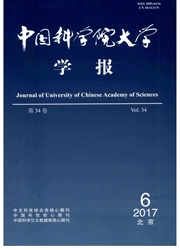

 中文摘要:
中文摘要:
利用我国地壳形变监测网15个双频GPS观测站2000年7月1日到8日、14日到18日两个连续时段的数据评价了电离层网格校正算法在磁暴期间和平静期的精度.文中描述了算法的思想,重点计算了位于不同纬度区域以及不同空间环境下用户站的精度.并从系统的完整性出发,利用地学统计方法进一步分析了校正误差的空间相关性分布.这为网格点置信区间距离函数的构建提供了有用的信息.计算结果表明,位于中高纬的用户站精度较高,平均值约为0.4m左右,而低纬地区精度相对降低;此次磁暴期间,算法的精度明显降低,对于低纬地区的影响更为显著;校正误差随距离增大相关性降低,电离层平静期间,误差较小,周围邻近点的相关性较高,磁暴期间,误差增大,相关性减弱.
 英文摘要:
英文摘要:
In this paper, the algorithm of wide area augmentation system ionospheric grid correction was tested using 15 GPS stations' observational data. The span of data was from july 1 to 8 and from July 14 to 18, 2000, which represented quiet and disturbed geomagnetic conditions respectively. The paper discussed algorithmic accuracy and the emphasis was laid on the different latitude users and the stormy conditions. Using geostatistics method, this paper further analyzed the spatial correlation of ionospheric grid errors distribution in terms of integrity and availability. The results show that precision is high for user stations in the middle-high latitudes with the average of around 0.4m,but it relatively decreases for the lower latitude. The algorithm prediction error is larger under ionospheric stormy conditions, which is more prominent for the stations in the low latitudes. Correlation of residual error decreases with the great circle distance between pierce points increasing. For the ionospheric quiet behaviors residual error is small and correlation is high between neighboring errors, but it is the opposite for the storm time.
 同期刊论文项目
同期刊论文项目
 同项目期刊论文
同项目期刊论文
 期刊信息
期刊信息
